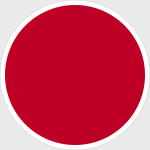DeAgostini DAWF11 Imperial Japanese Navy Mitsubishi A6M2B "Zero" Model 21 Fighter - Lt(jg) Shigehisa Yamamoto, Akagi, Pearl Harbor, Hawaii, December 7th, 1941 [With Collector Magazine] (1:72 Scale)
"We have resolved to endure the unendurable and suffer what is insufferable."
- Japanese Emperor Hirohito speaking to the Japanese people after the atomic bombings, August 1945
 The Mitsubishi A6M "Zero" is a long-range carrier-based fighter aircraft formerly manufactured by Mitsubishi Aircraft Company, a part of Mitsubishi Heavy Industries. It was operated by the Imperial Japanese Navy (IJN) from 1940 to 1945. The A6M was designated as the Mitsubishi Navy Type 0 carrier fighter, or the Mitsubishi A6M Rei-sen. The A6M was usually referred to by its pilots as the Reisen (zero fighter), "0" being the last digit of the imperial year 2600 (1940) when it entered service with the Imperial Navy. The official Allied reporting name was "Zeke", although the name "Zero" was used colloquially as well.
The Mitsubishi A6M "Zero" is a long-range carrier-based fighter aircraft formerly manufactured by Mitsubishi Aircraft Company, a part of Mitsubishi Heavy Industries. It was operated by the Imperial Japanese Navy (IJN) from 1940 to 1945. The A6M was designated as the Mitsubishi Navy Type 0 carrier fighter, or the Mitsubishi A6M Rei-sen. The A6M was usually referred to by its pilots as the Reisen (zero fighter), "0" being the last digit of the imperial year 2600 (1940) when it entered service with the Imperial Navy. The official Allied reporting name was "Zeke", although the name "Zero" was used colloquially as well.
The Zero is considered to have been the most capable carrier-based fighter in the world when it was introduced early in World War II, combining excellent maneuverability and very long range. The Imperial Japanese Navy Air Service also frequently used it as a land-based fighter.
In early combat operations, the Zero gained a reputation as a dogfighter, achieving an outstanding kill ratio of 12 to 1, but by mid-1942 a combination of new tactics and the introduction of better equipment enabled Allied pilots to engage the Zero on generally equal terms. By 1943, the Zero was less effective against newer Allied fighters. The Zero lacked hydraulic boosting for its ailerons and rudder, rendering it difficult to maneuver at high speeds. Lack of self-sealing fuel tanks also made it more vulnerable than its contemporaries. By 1944, with Allied fighters approaching the A6M's levels of maneuverability and consistently exceeding its firepower, armor, and speed, the A6M had largely become outdated as a fighter aircraft. However, as design delays and production difficulties hampered the introduction of newer Japanese aircraft models, the Zero continued to serve in a front-line role until the end of the war in the Pacific. During the final phases, it was also adapted for use in kamikaze operations. Japan produced more Zeros than any other model of combat aircraft during the war.
Pictured here is a 1:72 scale replica of an Imperial Japanese Navy Mitsubishi A6M2B "Zero" fighter that was piloted by Lt(jg) Shigehisa Yamamoto, who was embarked upon the aircraft carrier Akagi, then attacking Pearl Harbor, Hawaii, on December 7th, 1941.
Now in stock!
Dimensions:
Wingspan: 5-inches
Length: 5-inches
Release Date: February 2020
Historical Account: "The Slayer's Axe" - Shortly before 08:00 on the morning of December 7th, 1941, Japanese aircraft from six fleet carriers struck the Pacific Fleet as it lay in port at Pearl Harbor, and - in the ensuing two attack waves - wrought devastation on the Battle Line and on air and military facilities defending Pearl Harbor.
On board Arizona, the ship's air raid alarm went off about 07:55, and the ship went to general quarters soon thereafter. Shortly after 08:00, a bomb dropped by a high-altitude Kate bomber from the Japanese carrier Kaga hit the side of the #4 turret, glancing off and into the deck below starting a small fire which caused minimal damage.
At 08:06, a bomb from a Hiryu Kate hit between and to starboard of Turrets No. 1 and 2. The subsequent explosion, which destroyed the forward part of Arizona, was due to the detonation of the ammunition magazine, located in an armored section under the deck. Most experts seem to agree that the bomb could hardly have pierced the armor. Instead, it seems widely accepted that the black powder magazine (used for aircraft catapults) detonated first, igniting the smokeless powder magazine (used for the ship's main armament). A 1944 BUSHIP report suggests that a hatch leading to the black powder magazine was left open, with perhaps inflammable materials stocked nearby. A US Navy historical site history.navy.mil goes as far as to suggest that black powder might have been stockpiled outside of the armored magazine. However, it seems unlikely that a definitive answer to this question might be found. Credit for the hit was officially given to Japanese pilot Tadashi Kusumi. The cataclysmic explosion ripped through the forward part of the ship, touching off fierce fires that burned for two days.





 Zero
Zero 


